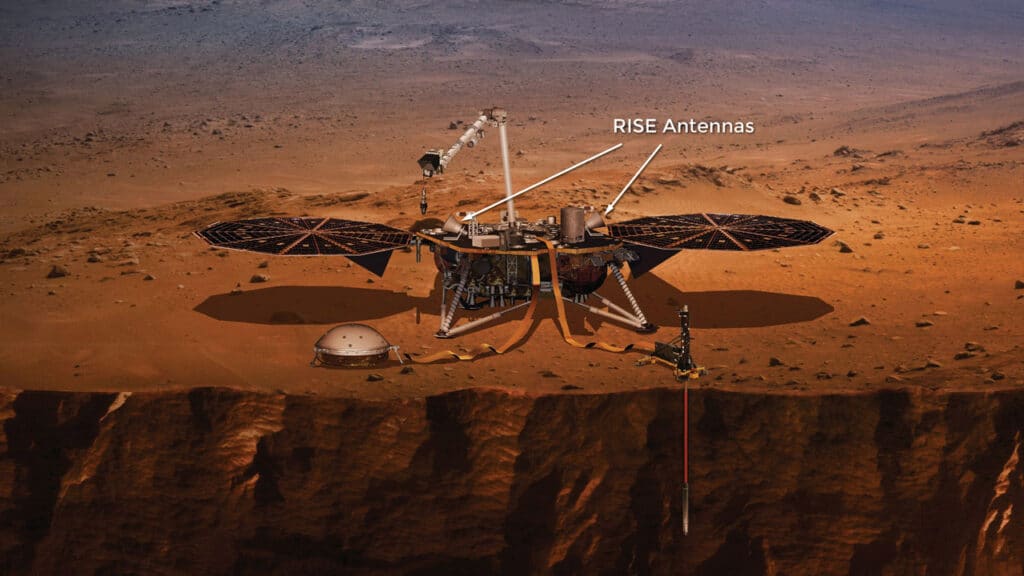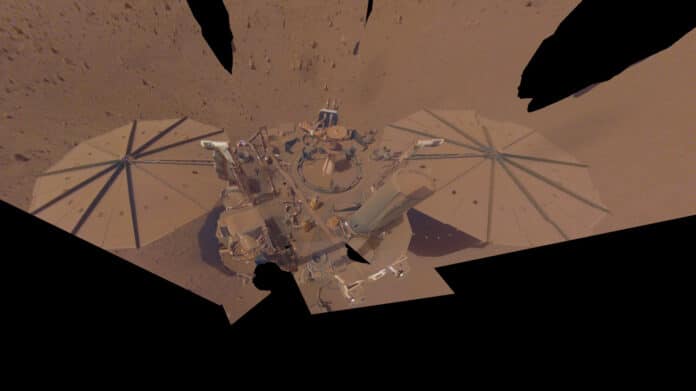Knowledge of Mars’s interior structure and atmosphere is essential to understanding how the planet has formed and evolved. However, a significant obstacle to investigations of planetary interiors is that they are not directly accessible.
Using InSight’s radio science data, scientists have made the most precise measurements of Mars’ rotation for the first time. The findings revealed that Mars’ rotation rate is accelerating by about four milliarcseconds per year.
It also revealed how the planet wobbles due to the “sloshing” of its molten metal core.
The Rotation and Interior Structure Experiment, or RISE, a radio transponder and a set of antennas, was a component of InSight that the authors used to monitor the planet’s spin rate. The data revealed that the accelerating rate of the planet’s rotation corresponds to a shortening of the length of the Martian day by a fraction of a millisecond per year.
It’s a modest acceleration, and experts must determine what’s causing it. However, they have a few theories, such as ice accumulation on the polar caps or post-glacial rebound, in which landmasses rise after being buried by ice. A planet’s mass change can accelerate, much like an ice skater spinning with their arms stretched out and then pulling their arms in.

InSight’s principal investigator, Bruce Banerdt of NASA’s Jet Propulsion Laboratory in Southern California, said, “It’s cool to get this latest measurement – and so precisely. I’ve been involved in efforts to get a geophysical station like InSight onto Mars for a long time, and results like this make all those decades of work worth it.”
In the case of InSight, scientists would use the Deep Space Network to send a radio signal to the lander. The signal would then be reflected by RISE. When the reflected signal was received, scientists would look for minute changes in frequency caused by the Doppler shift. Scientists could establish the speed of the planet’s rotation by measuring the shift.
The study looked at data from InSight’s first 900 Martian days, which was ample time to check for such fluctuations. To reduce noise sources, scientists had their job cut out for them: Because water slows radio transmissions, moisture in the Earth’s atmosphere can distort the signal from Mars. So can the solar wind, the electrons, and protons ejected from the Sun into outer space.
Using RISE data, scientists also measured Mars’ wobble – called its nutation. The measurement allows scientists to determine the size of the core. They found a radius of roughly 1,140 miles (1,835 kilometers).
The authors then compared that result to two prior core readings obtained from the spacecraft’s seismometer. They focused on how seismic waves moved through the planet’s interior, whether bounced off the core or flowed through it unobstructed.
Using all three measurements, they estimate the radius of the core to be between 1,112 and 1,150 miles (1,790 and 1,850 kilometers). Mars has a radius of 2,106 miles (3,390 kilometers), roughly half the size of Earth’s.
The paper’s second author, Attilio Rivoldini of the Royal Observatory of Belgium, said, “RISE’s data indicate the core’s shape cannot be explained by its rotation alone. That shape requires slightly higher or lower density regions buried deep within the mantle.”
Journal Reference:
- Le Maistre, S., Rivoldini, A., Caldiero, A. et al. Spin state and deep interior structure of Mars from InSight radio tracking. Nature 619, 733–737 (2023). DOI: 10.1038/s41586-023-06150-0
